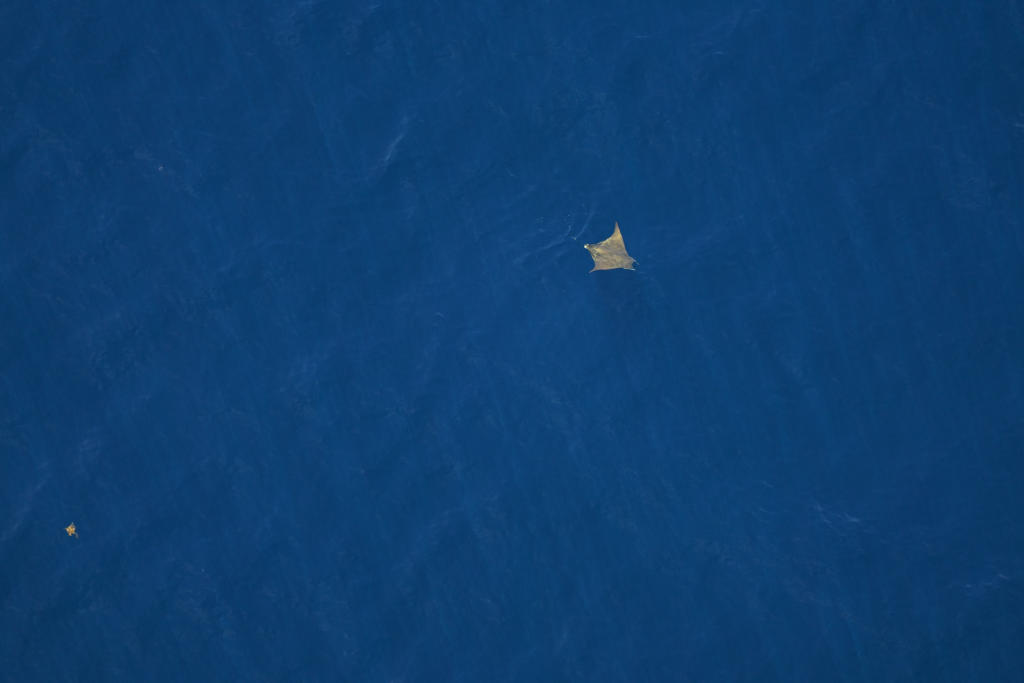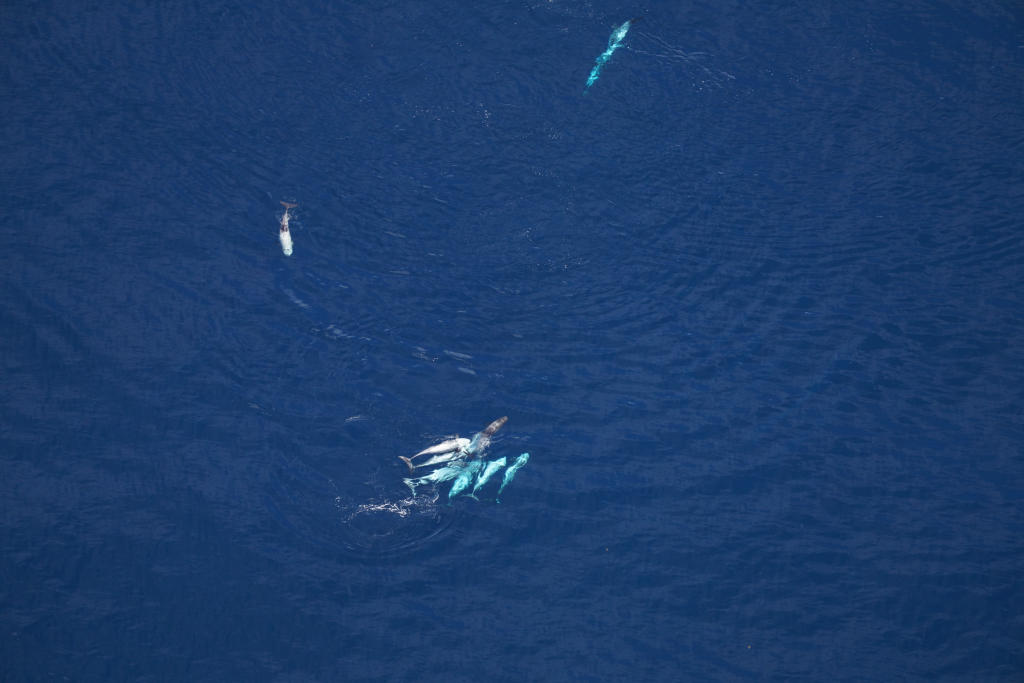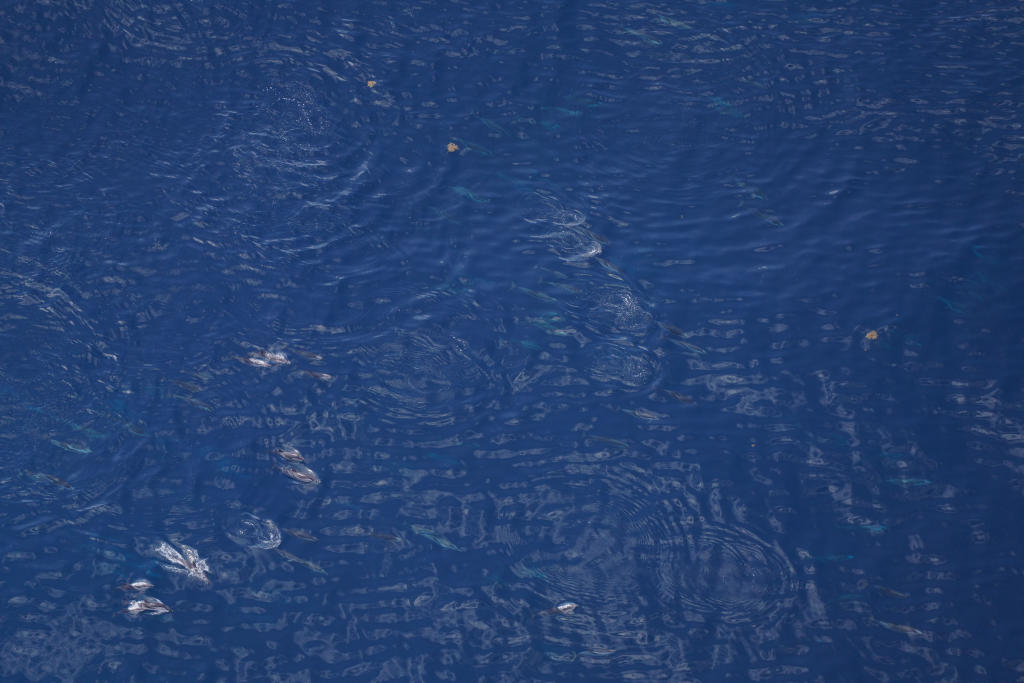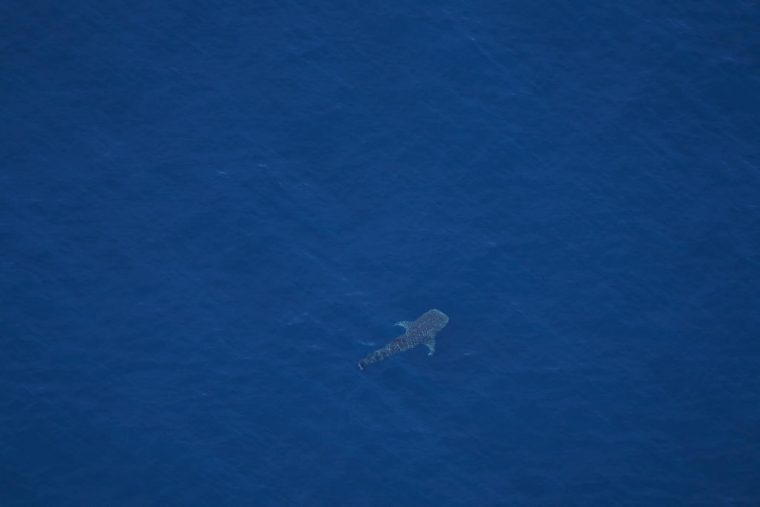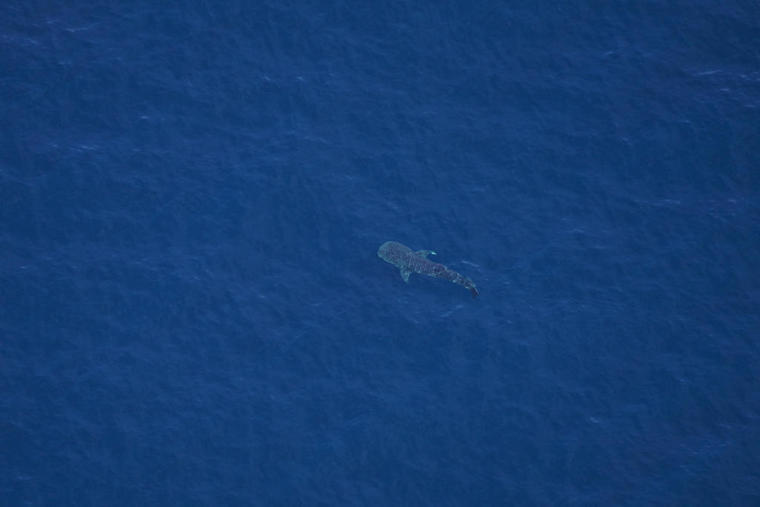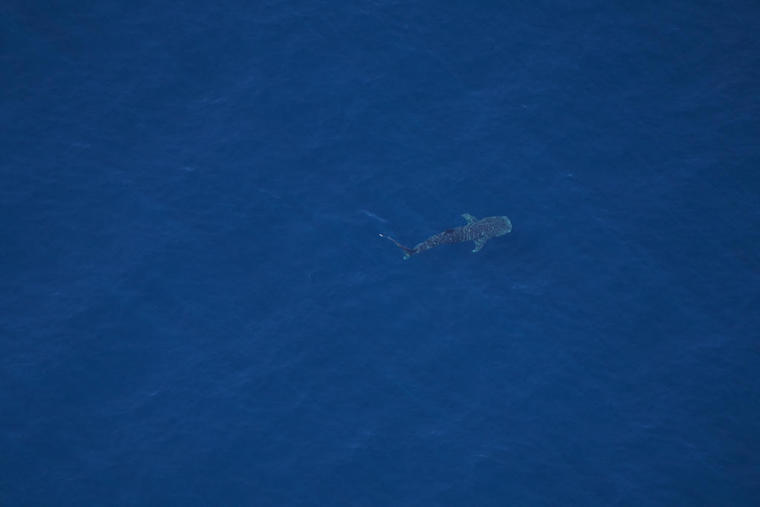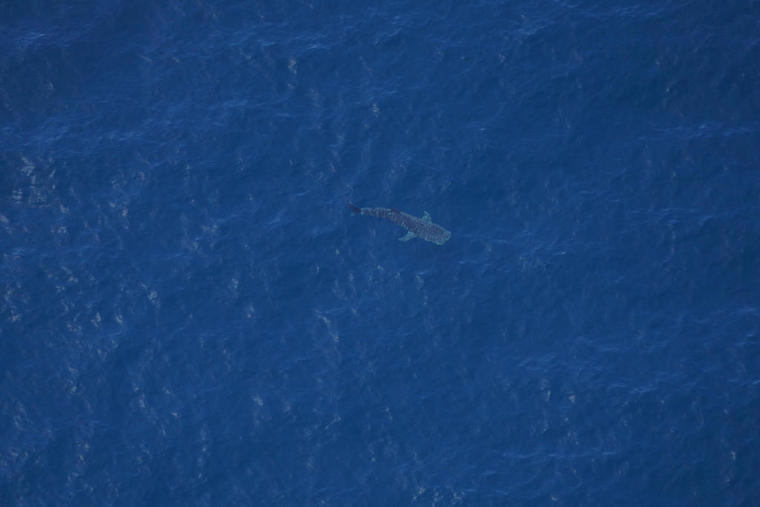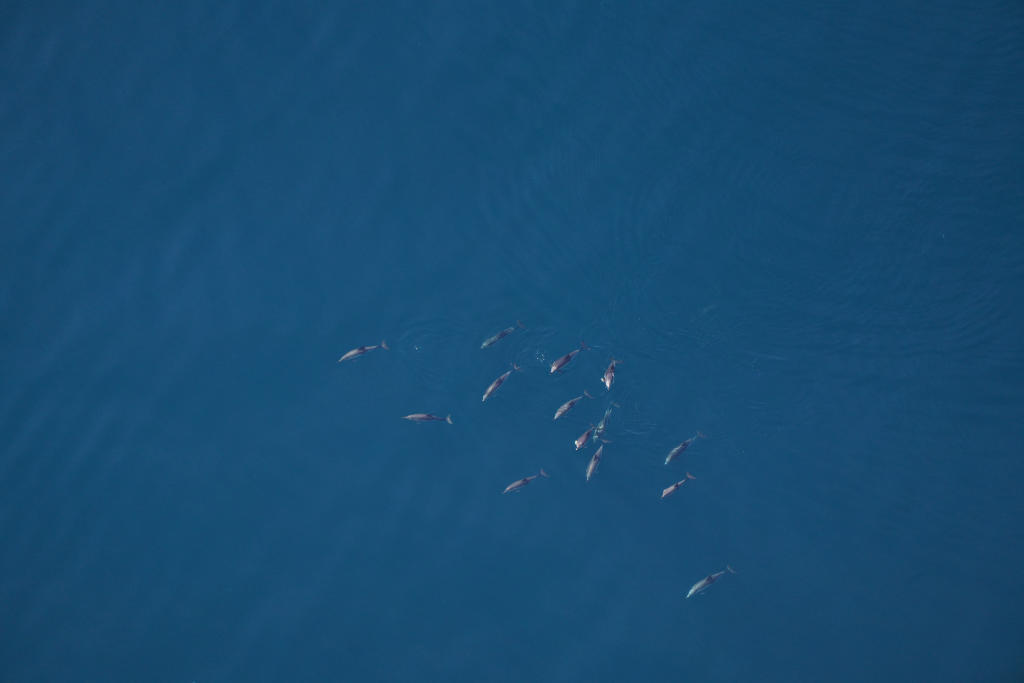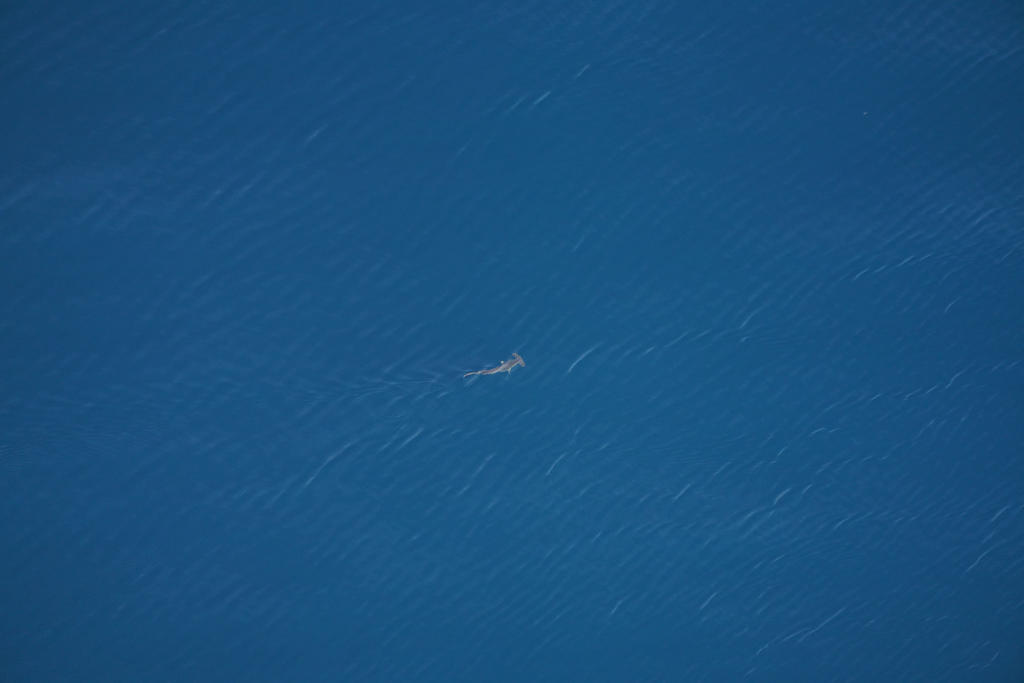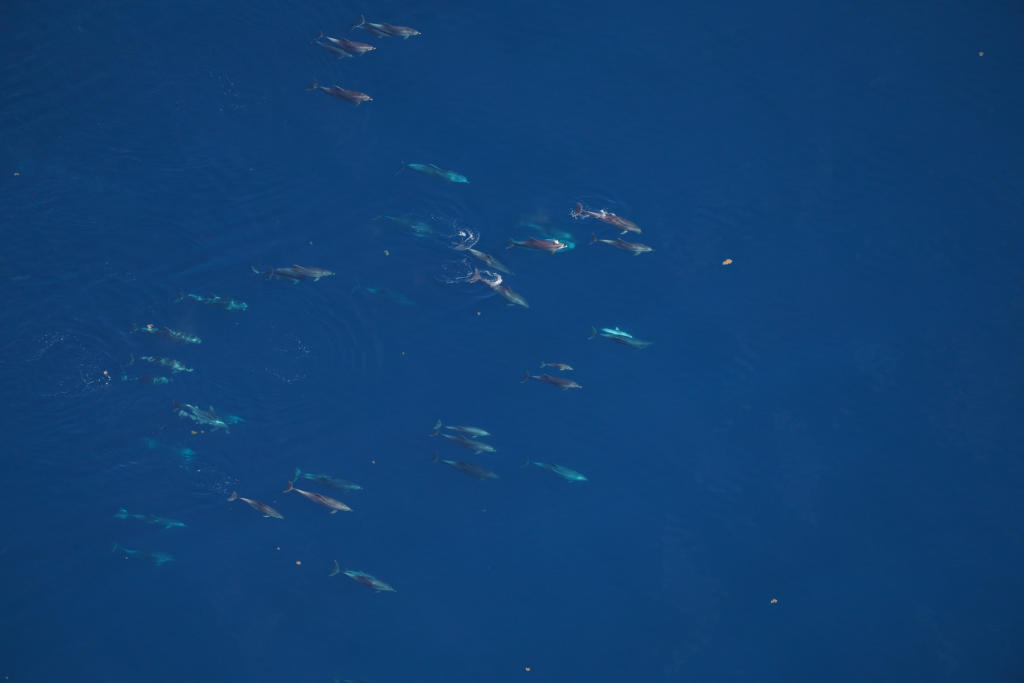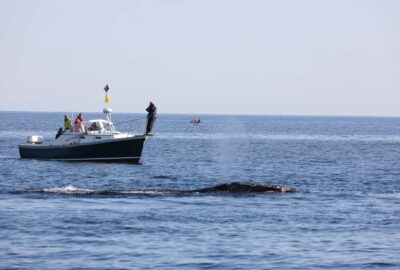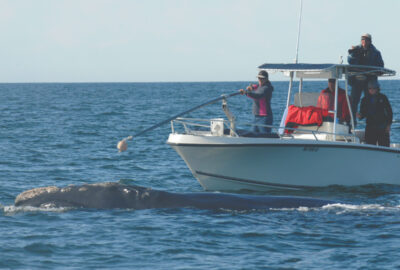Please note: We strongly recommend purchasing tickets online in advance during the heat wave, as our ticket booth is located outdoors.
Reflections on My First Survey in the Marine National Monument
By New England Aquarium on Tuesday, August 23, 2022

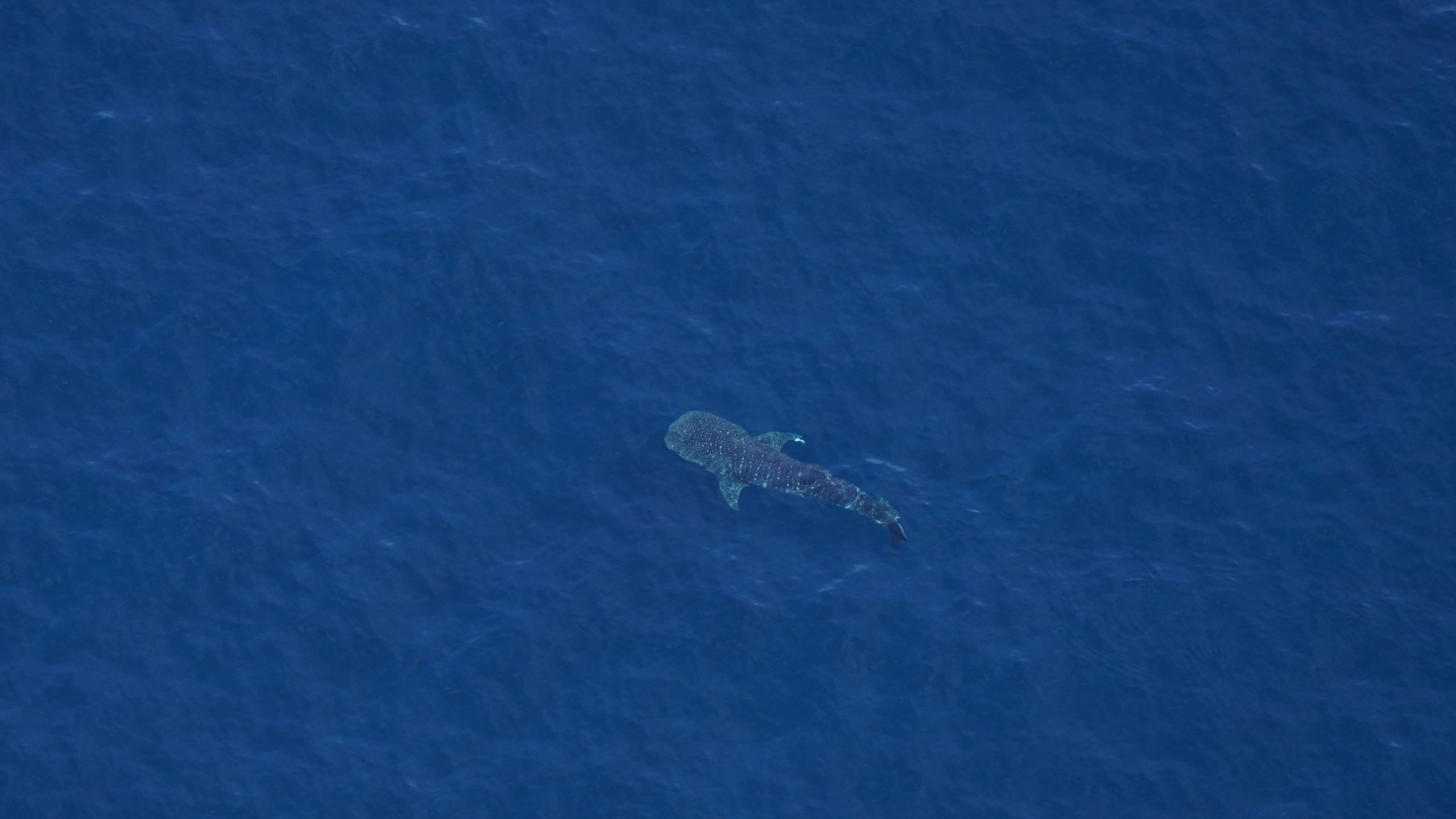
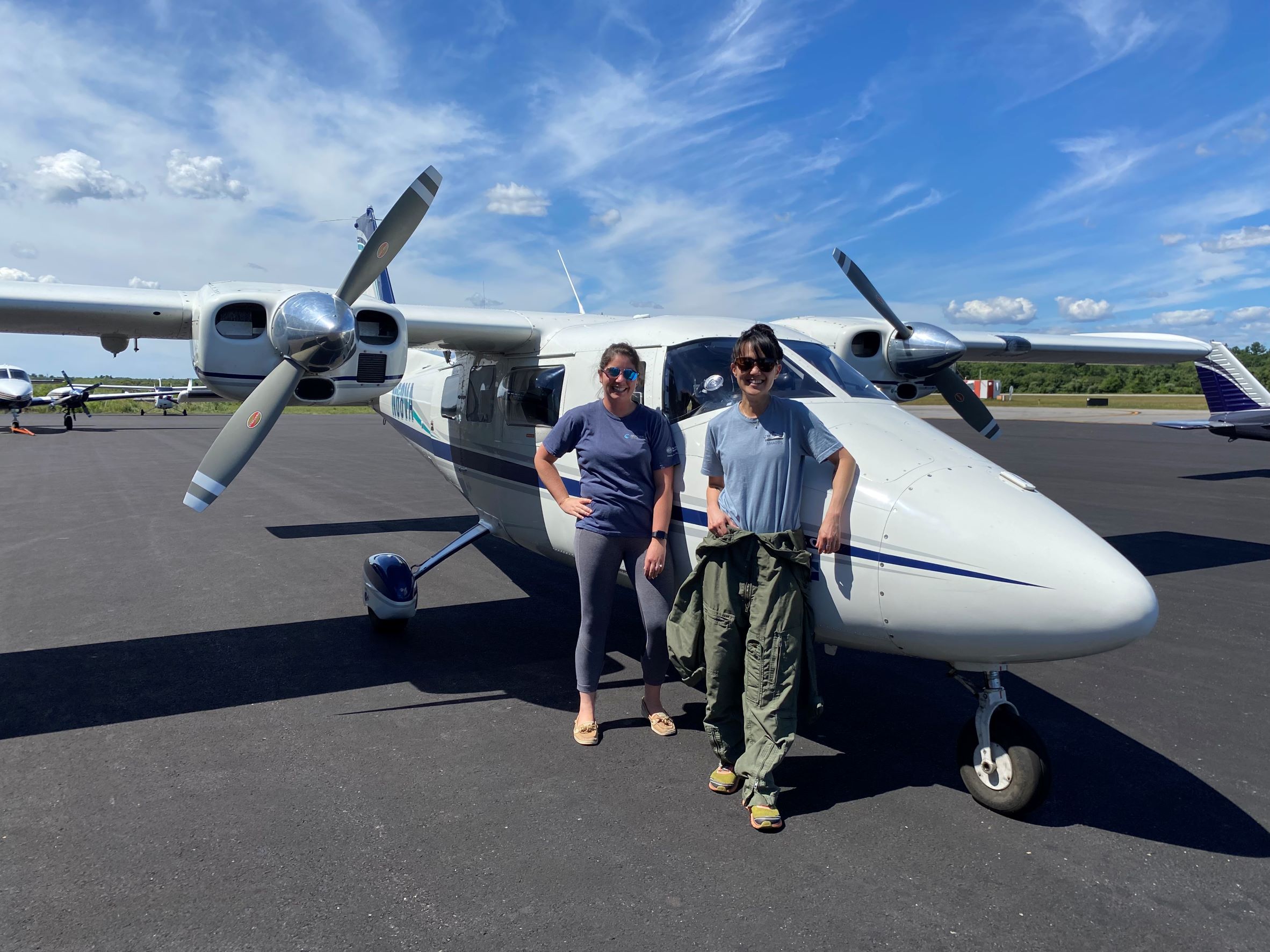
By Sharon Hsu
It’s not every day that I leave the house telling my partner, “If you need me, I’m not ignoring you—I’m just 130 miles offshore looking for whales! I’ll be home later.” Although I have flown coastal aerial surveys for the past few years, I have never flown so far offshore. I may have said it more enthusiastically than intended, but I was thrilled to be out the door on my way to survey the Northeast Canyons and Seamounts Marine National Monument.
Why the excitement? This marine Monument is located roughly 130 miles southeast of Cape Cod, far enough offshore that any flight to it is special. It spans an area about the size of Connecticut, but includes four underwater mountains (seamounts) and three deep-sea canyons. It is known to be a hotspot for marine biodiversity, including marine mammals, turtles, fish, birds, and sharks.
The New England Aquarium has been conducting aerial surveys in the canyons unit of the Monument since 2017. Our survey on August 14 was the Aquarium’s twelfth and my first survey of the Monument. Having heard about all the offshore species sightings, such as beaked whales and blue whales, on previous surveys, I had an idea about what to expect and the Monument did not disappoint!
The species assemblage in the Monument is different from our usual surveys in southern New England waters. Our usual surveys just south of Martha’s Vineyard and Nantucket usually extend roughly 30 miles offshore, which is considered nearshore in comparison to the Monument. In this nearshore area, we are quite familiar with dolphin species, such as common dolphins (Delphinus delphis) and bottlenose dolphins (Tursiops truncatus), but we don’t often see offshore species. The Monument hosts a wider variety of marine mammals, including offshore and deep-diving species such as sperm whales (Physeter macrocephalus) and beaked whales. A recent study by Brooke Hodge of the Anderson Cabot Center’s Spatial Ecology, Mapping, and Assessment Program (EcoMap) showed that the canyons unit of the Monument has a much higher species diversity compared to the rest of the East Coast. The high species diversity in the Monument is driven in large part by its location on the shelf edge (where the ocean floor transitions from shallow to deep), the presence of canyons, and high productivity.
By the end of the first survey track line in the Monument, we had already seen several offshore species we don’t typically see closer to shore: striped dolphins (Stenella coeruleoalba)—many with calves, groups of pilot whales (Globicephala sp.), Risso’s dolphins (Grampus griseus), and even a fever of Chilean devil rays (Mobula tarapacana). I didn’t know that a group of rays is called a “fever” until this survey! The majority of these species are typically considered offshore or open-water species, and thus fall into the realm of species that I don’t typically see as an aerial observer that usually flies nearshore surveys. Seeing them on our survey was genuinely thrilling.
/
A personal highlight was a whale shark (Rhincodon typus) sighting. When trying to identify an unusual sighting from a plane, sometimes a very quick series of deductive statements pops up in my head. For the whale shark, it went something like this:
Shark.
Large shark.
Very large shark.
Very square head.
Big, square-headed shark.
Whale shark?
Whale shark!
/
I have previously seen these large, endangered sharks only in warm, tropical waters. After a winter of flying in New England, the bitter cold was still on my mind, so seeing this species was a pleasant surprise and reminder that summer is here. Whale sharks can be seen in the northeast canyons in the summer when protrusions of warm Gulf Stream waters enter the area, and this species has been sighted on previous Monument surveys. Luckily, it was an extremely cooperative subject, and we were able to photograph it to confirm that it was indeed a whale shark.
In just a few short hours, we had seen: 24 Atlantic spotted dolphins (Stenella frontalis), one blue shark (Prionace glauca), 86 bottlenose dolphins, 21 Chilean devil rays, two fin whales (Balaenoptera physalus), 169 Risso’s dolphins, 86 hammerhead sharks (Sphyrna sp.), ten ocean sunfish (Mola mola), 15 pilot whales, 16 common dolphins, 75 striped dolphins, two tiger sharks (Galeocerdo cuvier), four unidentified beaked whales (Mesoplodon sp.), and one whale shark.
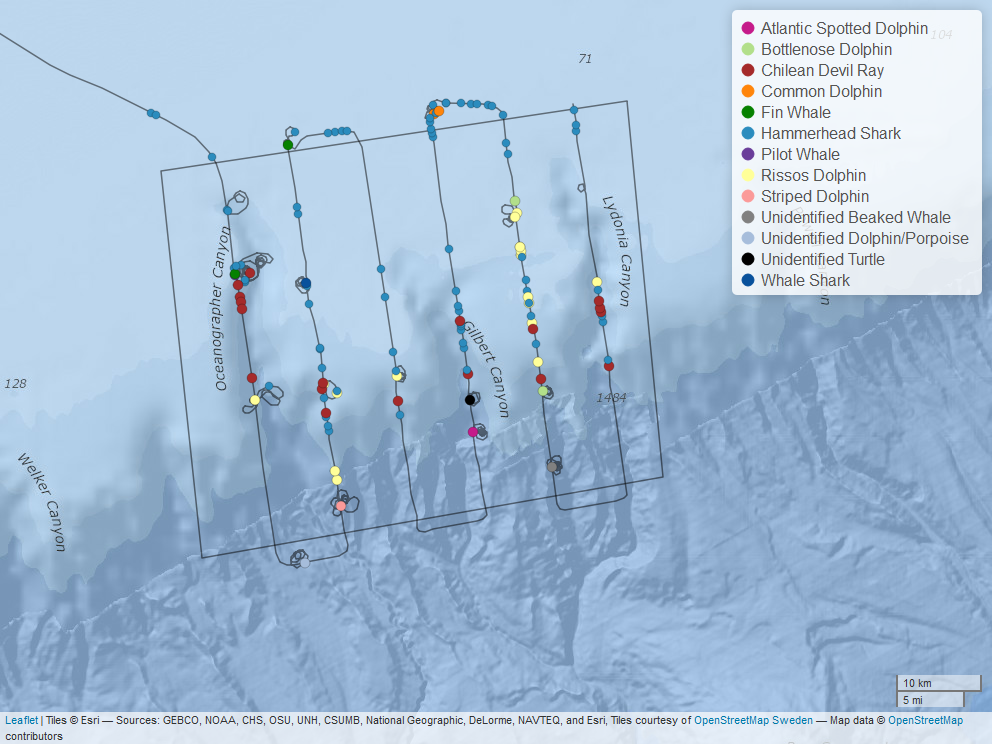
While we delight in seeing the offshore species in the Monument, the impossibly blue water provides a stunning background to photograph old friends, as well. The calm winds made the water appear almost glassy; we watched a small group of common dolphins meander past a shark, and a large pod of bottlenose dolphins escort their tiny calves through the water.
/
Reflecting on the sheer number of species and individuals sighted raises so many questions about the processes that drive the biodiversity and species assemblage here and how these characteristics might change with climate change. We are already looking forward to our next Monument survey. Is it because we love seeing whales? Is it because we are brimming with research questions? Can it be both? As marine-life enthusiasts and researchers, our team is immensely grateful to have the opportunity to conduct these surveys and continue the research needed to support the protection of the Monument and other marine areas.
This survey was made possible by the support of Conservation Law Foundation and the Natural Resources Defense Council.

